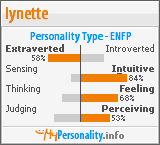My Favorite Carols: Still, Still, Still
>> Tuesday, November 30, 2010
I was introduced to this charming little Austrian carol when I was in high school and sang with the Concert Choir. It was a mainstay in all of our Christmas programs, and years later, when my own daughter, Heather, sang with the Stillwater High School Concert Choir, the tradition remained as it still does, to this day.
The tune of this charming Weihnachtslied (Christmas Song) is based on an 1819 melody by Süss, with the original words, slightly changed over time and location, by G. Götsch.
The melody has the fetching simplicity of a children's tune. The thrice reiterated word at the beginning of each verse is sung to steady eighth notes of an arpeggiated major chord -- for example, "still" to tones 5 and 8, "still" to 3 and 5, and the final "still" to the single tonic note. Answers.com
Still, still, still,
For the baby wants to sleep.
The angels jubilate with beauty
[The angels make beautiful music]
Making music by the manager.
[In jubilation by the baby]
Sleep, sleep, sleep,
My dear little child, sleep!
Maria will sing gently
And open her true heart to you.
[and give you her virgin breast]
Great, great, great,
The love is more than great.
God has left his heavenly throne,
To wishes to walk the streets.
Great, great, great,
The love is more than great.
This recording features The Vienna Boy's Choir singing the first three stanzas of Stille, Stille, Stille.
The tune of this charming Weihnachtslied (Christmas Song) is based on an 1819 melody by Süss, with the original words, slightly changed over time and location, by G. Götsch.
The melody has the fetching simplicity of a children's tune. The thrice reiterated word at the beginning of each verse is sung to steady eighth notes of an arpeggiated major chord -- for example, "still" to tones 5 and 8, "still" to 3 and 5, and the final "still" to the single tonic note. Answers.com
For the baby wants to sleep.
The angels jubilate with beauty
[The angels make beautiful music]
Making music by the manager.
[In jubilation by the baby]
Sleep, sleep, sleep,
My dear little child, sleep!
Maria will sing gently
And open her true heart to you.
[and give you her virgin breast]
Great, great, great,
The love is more than great.
God has left his heavenly throne,
To wishes to walk the streets.
Great, great, great,
The love is more than great.
This recording features The Vienna Boy's Choir singing the first three stanzas of Stille, Stille, Stille.










































